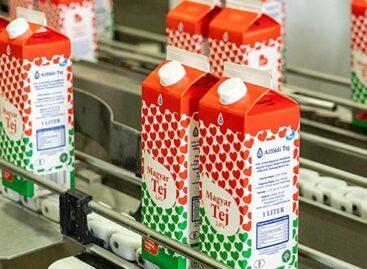Changing store landscape: rents, store closures and new opportunities in the retail real estate market
While prime shopping centers in Budapest are operating near full occupancy, national store closure statistics and declining numbers of commercial properties for sale present a mixed picture of the Hungarian retail real estate landscape. Demand is shifting, investors are eyeing new uses for vacant properties, and rental dynamics vary sharply by location.
Prime Areas Stable, the Rest in Transition
 According to the latest report from the Hungarian National Bank, the average vacancy rate in Budapest’s primary shopping centers dropped to just 1–2% by the end of 2024—an extremely low figure. Secondary centers, however, still show a vacancy rate of around 10%. Rental rates have remained steady:
According to the latest report from the Hungarian National Bank, the average vacancy rate in Budapest’s primary shopping centers dropped to just 1–2% by the end of 2024—an extremely low figure. Secondary centers, however, still show a vacancy rate of around 10%. Rental rates have remained steady:
-
Prime locations in Budapest: €70–90/m²/month
-
Secondary locations: €30–50/m²/month
Meanwhile, the Central Statistical Office (KSH) paints a bleaker national picture. By mid-2024, the number of operational retail stores in Hungary had dropped by 7,000 year-on-year, down to 96,000. The sharpest decline was seen among non-food retailers (-7.9%), followed by food and mixed stores (-5.4%). Even petrol stations experienced a slight 1% decrease. Paradoxically, the average floor space per store increased by 4.7%, indicating closures primarily affected smaller shops.
Budapest and Pest County continue to dominate in numbers, accounting for 31% of the national retail network. However, the capital also suffered the highest store closure rate, with a nearly 10% year-on-year decline.
Falling Prices, Rising Interest
According to Zsuzsa Lipták, managing director of real estate site Zenga.hu, there has been growing interest in small-scale commercial properties such as patisseries and wine bars, with prices dropping significantly. Advertised prices for wine bars, for instance, have fallen by 20–30% per square meter compared to last year.
Conversely, properties tied to production and industrial use (like workshops and warehouses) have seen a 10% increase in rent. Demand is climbing: Zenga reported a 23% increase in inquiries for commercial properties in Q1 2025 versus the same period in 2024.
Reimagining Vacant Retail Spaces
Vacant commercial properties are increasingly being repurposed, especially in urban areas. As Lipták explains, old retail units are being transformed into offices, cafes, coworking spaces, or even residential apartments, provided regulatory approvals can be obtained.
According to Péter Szegő, PR and analysis expert at Duna House, retail property supply in Q1 2025 fell by 12% year-on-year, while hospitality properties saw a 15% decline in total listings. However, the number of lease listings in the hospitality sector increased by 14%, suggesting more owners are opting to rent rather than sell.
How Much Does It Cost to Rent?
Duna House data shows wide regional variation in rental rates:
Most expensive rental areas in Budapest:
-
Andrássy Avenue (District VI): up to HUF 28,000/m²/month
-
Szabadság Square (District V): around HUF 12,000/m²/month
-
Corvin Quarter (District VIII): HUF 8,000–10,000/m²/month
Least expensive areas:
-
Soroksár (District XXIII): HUF 2,000–3,000/m²/month
-
Újpest (District IV): HUF 4,000–6,000/m²/month
Investment Sentiment Improving
Although investment volumes were low in 2024, outlooks for 2025 are more optimistic. Szegő attributes this to falling ECB interest rates, improving investor sentiment, and a rise in Asian capital. Increased activity is also expected in the retail and hotel segments.
Related news
Energy efficiency revolution in domestic shopping malls
🎧 Hallgasd a cikket: Lejátszás Szünet Folytatás Leállítás Nyelv: Auto…
Read more >Shared thinking, conscious renewal: the Hungarian retail real estate market has reached a turning point
🎧 Hallgasd a cikket: Lejátszás Szünet Folytatás Leállítás Nyelv: Auto…
Read more >Nespresso axes 200 UK jobs amid store shutdowns
🎧 Hallgasd a cikket: Lejátszás Szünet Folytatás Leállítás Nyelv: Auto…
Read more >Related news
Crowds return to stores: margin cap and year-end preparations drive retail traffic
🎧 Hallgasd a cikket: Lejátszás Szünet Folytatás Leállítás Nyelv: Auto…
Read more >The kings of the New Year’s Eve list: hot dogs and champagne in abundance
🎧 Hallgasd a cikket: Lejátszás Szünet Folytatás Leállítás Nyelv: Auto…
Read more >The Alföldi Tej case is drifting towards an uncertain outcome
🎧 Hallgasd a cikket: Lejátszás Szünet Folytatás Leállítás Nyelv: Auto…
Read more >






